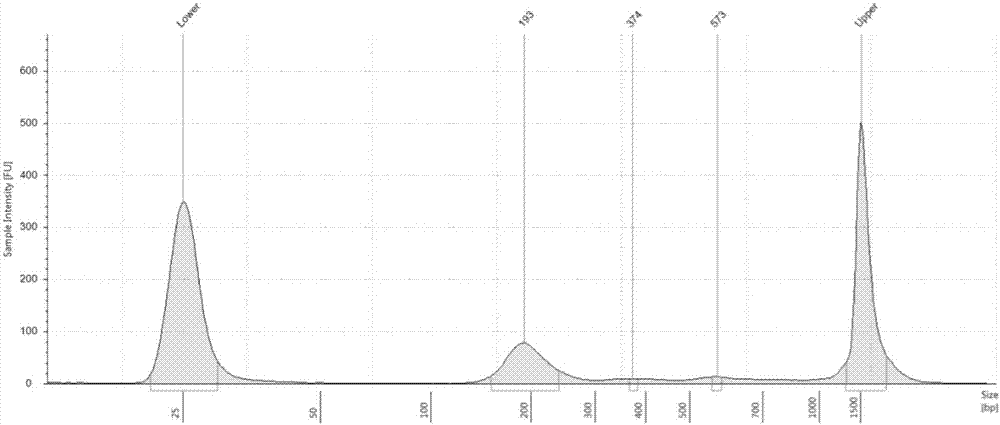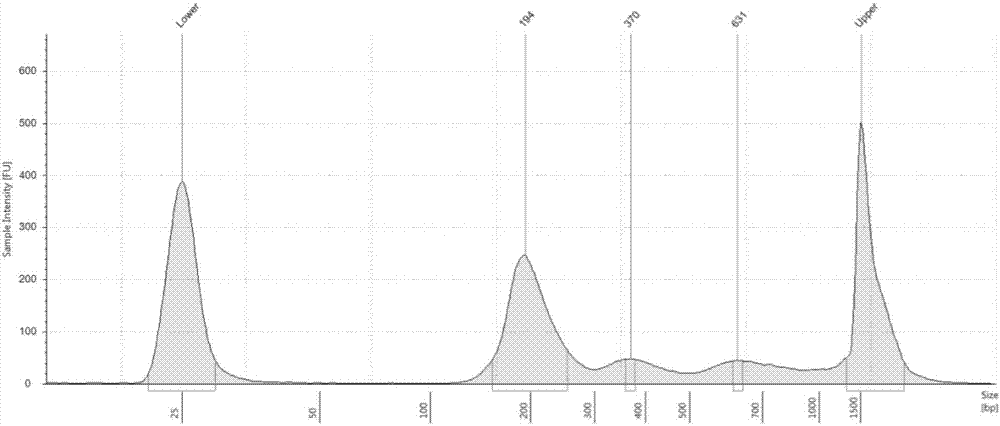Kit for detecting benign or malignant pulmonary nodules and application thereof
A technology for detecting reagents and pulmonary nodules, which is applied in the field of kits for detecting whether pulmonary nodules are benign or malignant, can solve problems such as slow clinical development, and achieve the effect of reducing surgical risks
- Summary
- Abstract
- Description
- Claims
- Application Information
AI Technical Summary
Problems solved by technology
Method used
Image
Examples
Embodiment 1
[0061] Embodiment 1: the composition of the kit that detects pulmonary nodule as benign or malignant
[0062] Table 1: Components of kits for detecting lung nodules as benign or malignant
[0063] Numbering name volume Specification A Streptavidin Magnetic Beads 5mL 24 times B Adapter 120μL 24 times C PCR primers 2OD 24 times D Pulmonary nodule 358 gene probe 24 μL 24 times E h 2 o
2mL
[0064] The above table 1 defines the composition of the kit for detecting pulmonary nodules as benign or malignant, and some components in the kit are further described below:
[0065] A) The streptavidin magnetic beads in the kit of the present application are used to purify the samples and PCR products by magnetic bead adsorption method treated with streptavidin. It can specifically bind to biotin at the 3' end of the probe to purify and enrich PCR products.
[0066] B) The adapter in the kit of this application is d...
Embodiment 2
[0081] Example 2: Genetic detection of pulmonary nodules in two patients (two samples are samples of benign pulmonary nodules numbered LN201601 and malignant pulmonary nodules of LN201602 respectively)
[0082] The detection method comprises the following steps:
[0083] 1. Collect blood samples from patients and separate them. The details of blood separation are as follows:
[0084] The drawn peripheral blood needs to be stored at 4°C and processed within two hours.
[0085] (1) Centrifuge at 1600g for 10min at 4°C, and divide the supernatant (plasma) into multiple 2.0mL centrifuge tubes after centrifugation. The blood cells in the lower layer are divided into 2mL cryopreservation tubes, which are the required blood cells;
[0086] (2) Centrifuge at 16,000 g for 10 min at 4°C to remove residual cells, and transfer the supernatant into a new 2.0 mL centrifuge tube to obtain the desired plasma. The samples were then stored in a -80°C freezer or dry ice for determination.
...
PUM
 Login to View More
Login to View More Abstract
Description
Claims
Application Information
 Login to View More
Login to View More - R&D
- Intellectual Property
- Life Sciences
- Materials
- Tech Scout
- Unparalleled Data Quality
- Higher Quality Content
- 60% Fewer Hallucinations
Browse by: Latest US Patents, China's latest patents, Technical Efficacy Thesaurus, Application Domain, Technology Topic, Popular Technical Reports.
© 2025 PatSnap. All rights reserved.Legal|Privacy policy|Modern Slavery Act Transparency Statement|Sitemap|About US| Contact US: help@patsnap.com



